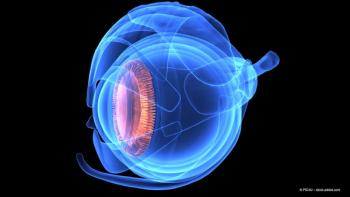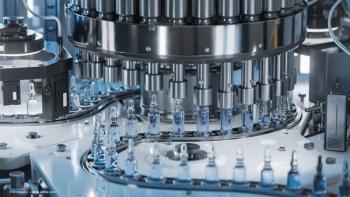
New hypersonic vitrector introduces concept of ‘vitreous liquefaction’
A new hypersonic liquefaction vitrectomy system, called Vitesse PPVX (Bausch + Lomb), offers several advantages over currently available vitrector technology. The device received FDA 510k approval in April 2017.
Reviewed by Paulo E. Stanga, MD
Take-home: A new hypersonic vitrector system, with FDA 510k approval in April 2017, offers advantages over guillotine-based systems. It effectively induces vitreous liquefaction. Surgeons can for the first time remove vitreous, silicone oil and soft lens matter with the same probe.
A new hypersonic liquefaction vitrectomy system, called Vitesse PPVX (Bausch + Lomb), offers several advantages over currently available vitrector technology. The device received FDA 510k approval in April 2017.
Today’s vitrectors are smaller in diameter-0.5 mm to 1.0 mm-and have a fast cut rate of up to 8,000 cpm, said Paulo E. Stanga, MD, a vitreoretinal surgeon at the Manchester Royal Eye Hospital, Manchester, UK. However, these systems continue to be mechanical, electrically, air-driven, and guillotine-based.
“We have to overcome the reduction in volume of flow when we look at smaller gauges,” Dr. Stanga said. “Efforts so far have been directed at reducing cut rate.”
There is also a mechanical limit on speed. For this reason, clinicians and researchers may need to think laterally about modifying the properties of fluidics, Dr. Stanga added.
Concept started in 2012
In 2012, Dr. Stanga began to work with Bausch + Lomb on a hypersonic vitrector with a tip that moves up and down 1.5 million times a minute, driving fluid through the port. This system has several advantages.
“There is an active zone with sheer crossflow that breaks-up into very small pieces the collagen fibers in the vitreous, effectively liquefying it,” Dr. Stanga explained. “This is the only system with a 100% duty cycle because no blade is involved, and the port is therefore constantly open. The liquefaction takes place in front of the port. We’re able to use a smaller port size and have perhaps reduced turbulence.”
Another advantage is that it is a single-needle system, which lowers resistance and facilitates the use of smaller gauges.
Dr. Stanga and research colleagues have completed four protocols with the system-two phase I studies, which were a cadaveric porcine eyes study and a cadaveric human eye study. They have also completed two phase II studies with live porcine eyes.
The team will begin a post-approval human eye study this summer, which would be followed by a multicenter human trial. The results of studies assessing performance of and ultrastructural and histopathological findings after pars plana vitrectomy using this hypersonic vitrector were published recently in the peer-reviewed literature.
Dependent on vacuum, flow
In their previous research, Dr. Stanga found that guillotine-cutter performance was dependent on cut-rate, vacuum, and gauge, both in water and vitreous. The hypersonic vitrector was dependent on vacuum and flow for both fluids and ultrasonic power for vitreous flow.
“The hypersonic vitrectomy technology allows for the use of a smaller gauge and port size, as well as lower infusion pressures than with a guillotine vitrector,” he said.
Microscopic findings when operating close to the retina were similar with both types of vitrectors when comparing the nasal macula and the temporal one that was used as a control. In a study of live porcine eyes, the microscopic findings were again nonspecific. A study of delayed finding 30-days post vitrectomy in live porcine eyes did not show abnormal findings on indirect ophthalmoscopy with nonspecific microscopic findings.
Using electron microscopy, fragmentation at 3,000 to 5,000 cuts a minute was seen, but it was significantly higher with the hypersonic vitrector.
“This is the first ever histopathology report of both the vitreous and the retina after the use of any type of vitrector,” Dr. Stanga said. “The hypersonic vitrector ‘liquefies’ the vitreous and hence modifies its viscosity. We are introducing the new concept of ‘vitreous liquefaction’.”
Dr. Stanga concluded that the 23-gauge hypersonic vitrector is as efficient as the 23-gauge guillotine vitrector.
“Hypersonic vitrectomy is a new technology with allows for smaller gauge with flow rate similar to that of the guillotine-based one,” Dr. Stanga. “It effectively induces vitreous liquefaction. We can, for the first time, remove vitreous, silicone oil, and soft lens matter with the same probe.”
Paulo E. Stanga, MD
This article was adapted from information about the system that Dr. Stanga presented at Retina Subspecialty Day held prior to the 2016 American Academy of Ophthalmology. Dr. Stanga is a consultant for Bausch + Lomb.
Newsletter
Keep your retina practice on the forefront—subscribe for expert analysis and emerging trends in retinal disease management.















































